As a smartphone user, one of your primary concerns is the battery life of your mobile phone. You want to easily access your favorite apps whenever you want, without worrying about it going off on you.
The good news is, you won’t have to worry about your smartphone’s battery life! Nowadays, there are various options you can use to prolong the battery power of your phone. And one of the most reliable ways is using portable chargers, such as wired or magnetic power banks to power your device throughout the day.
Which kind of power bank is a better choice when you’re traveling or for your everyday use? In this article, we’ll discuss the pros and cons of wired power banks and magnetic power banks.
Why do you need power banks?
We use our smartphones all day, everyday. We need to prolong the battery life of our phones and we can’t plug in our chargers while we’re on-the-go. Power banks help us charge our smartphones without using outlets.There are other reasons why you might need a power bank (if you don’t have one already).
1. You're a heavy smartphone user
If you can't seem to get your hands off your smartphone from the moment you wake up until you go to bed at night, a power bank will come in handy. It will help you keep your phone charged to allow you to stay connected.
2. You own a lot of devices
Sometimes you own more than one device that requires charging throughout the day. From a tablet, laptop to a smartphone, a multiple USB charging port power bank will save the day.
3. You're always on the move
One good thing about power banks is that you can take them literally anywhere. So, if your daily routine involves a lot of movement, you need a power bank.
What is a wired power bank?
Wired power banks are readily available in numerous physical and online stores. They are usually charged from USB sources using a wire connection, just as you would charge a standard smartphone.
They don't require special USB sources for charging. So, you can comfortably power them using a USB charger. Once you connect the wired power banks to their charging source, they will indicate that they're in a state of charging. Most of the time the display will come in the form of small rows of LED lamps or some alphanumeric display that will also show you the percentage of charge.
Generally, wired power banks use micro USB connectors to connect to power. Once your power bank is full, you can now use it to charge other devices, including your smartphone. Depending on the type of power bank, you might have one or more type A sockets to connect to your charging devices.
Typically, these power banks can hold a power capacity of 1,000 mAh or 2,000 mAh such as the Baseus Bipow. This PD 20W Portable Charger can comfortably charge your smartphone from 0% to 60% capacity in 30 minutes. It can also charge three devices simultaneously.
Some medium units can take 3,000-5,000 mAH, such as the Baseus Amblight 65W PD Fast Charge. It can charge a laptop at full speed and comes with multiple ports to allow you to charge three to five devices simultaneously.
Also, the Baseus Mini JA Fast charge can supply you with 10 days of power. For example, it can charge a Samsung Galaxy 9.5 times. Plus, it comes with three ports, making it ideal for daily life.
Pros of using wired power banks
- They charge faster and more efficiently
- Doesn't overheat the phone
- Affordable
Cons of using wired power banks
- Puts your data and your safety at risk
- Cables are bulky to carry around, especially when charging multiple devices
- Can cause wear and tear on your device
What is a magnetic power bank?
Magnetic power banks are typically wireless in a sense that you won’t need any cable to charge your phone. These devices come with magnetic rings to allow them to attach and hold to your phone, during the entire charging process. Because of this, magnetic power banks can accurately charge your phone, while ensuring both your device and your safety. This is a great feature, especially for heavy smartphone users.
The best part of using a magnetic bank is the convenience it offers. You can easily reach out to your phone whenever you want, without disrupting the charging process. As such, they're preferable choices among travelers, business people, and regular selfie enthusiasts.
That's not all, a magnetic power bank can also be used to wirelessly charge smartphones. And they usually also come with USB Type A and C cables.
The typical capacity of magnetic power banks ranges between 5,000 mAh-10,000 mAh. But some larger versions can hold up to 20,000 mAh.
The Baseus Magnetic wireless and Baseus Magnetic power bank with built-in cable come with a high-quality polymer lithium battery 10000mAh 20W snap and charge magnetic bank. They feature 18 built-in magnets to ensure they properly attach to your phone, so you can conveniently use them worry-free. Also, these magnetic power banks can comfortably simultaneously fast charge three devices, and allows even cable charging.
Pros of using magnetic power banks
- You don't have to carry cables around
- They protect your phone from unnecessary wear and tear
- You can charge multiple smartphones simultaneously
- They provide a safer way of charging your phone
- Wireless charging is simply neat
Cons of using magnetic power banks
- They are slower and less efficient in charging compared to wired power banks
- They can cause your phone to overheat
- They are expensive, so might not be an option if you're working on a tight budget
Conclusion
Wired power banks power your phone through the use of mini cables. They can comfortably charge 3-5 devices at once, depending on the number of ports available on your banks.
These power banks have a capacity of holding 10,000 mAh to 20,000 mAh. They charge faster and efficiently, don't overheat your phone, and are pretty affordable for everyone.
On the other hand, magnetic power banks are wireless, and although most of them come with cables, you don't have to use them to charge your phone. They attach easily to your phone, making it easy to continue using it, without worrying about your safety, and that of your device.
Besides, you don't have to carry cables around when using the magnetic power bank. Also, they protect your phone from unnecessary wear and tear, and allow you to charge multiple smartphones simultaneously while keeping your surroundings neat.
That said, the best option for you, among the two, depends on your phone and specific needs.
 United States/English
United States/English




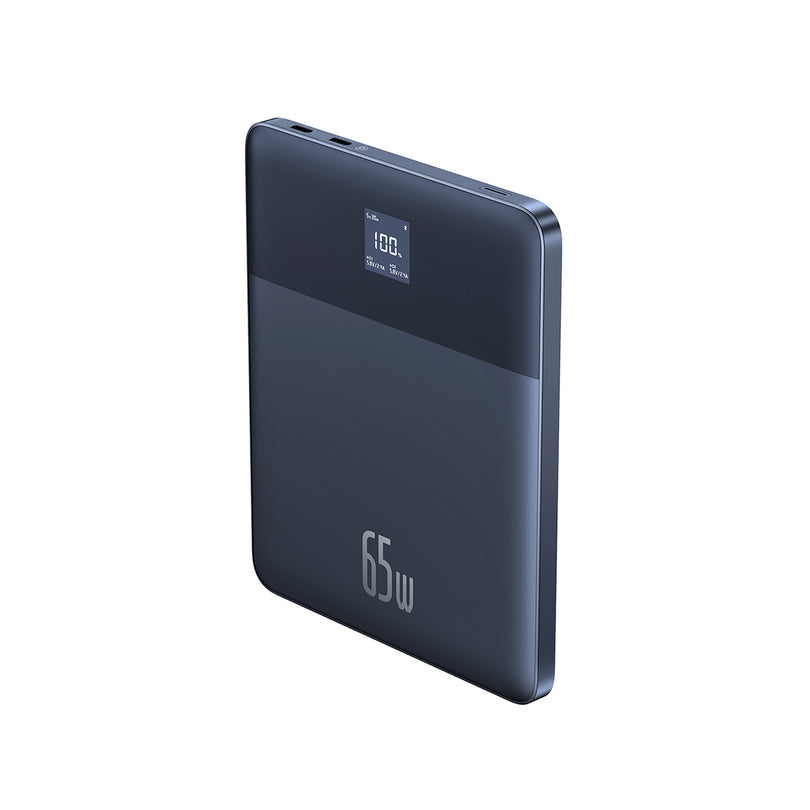
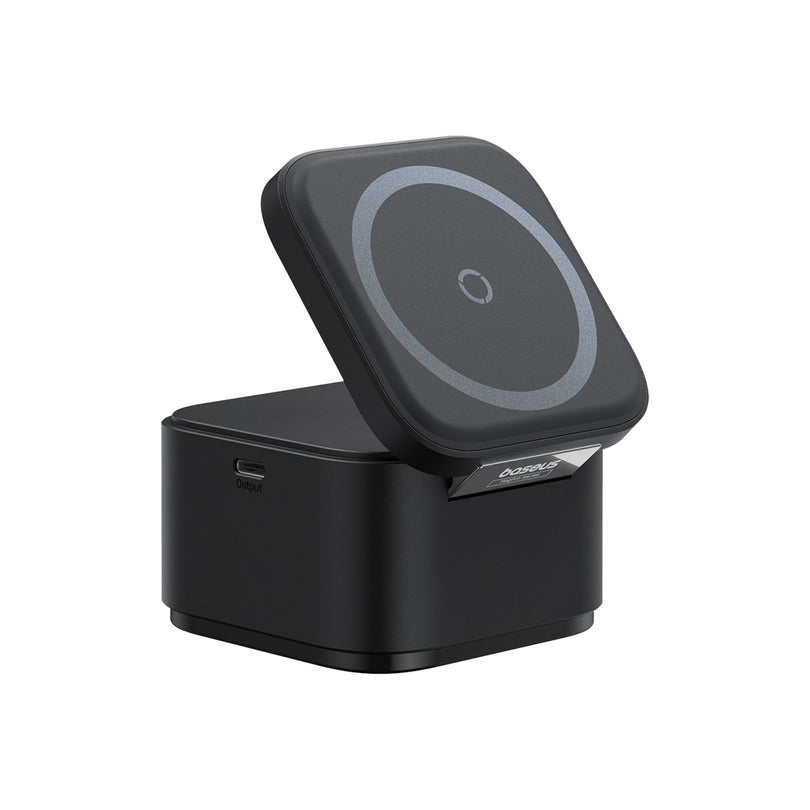
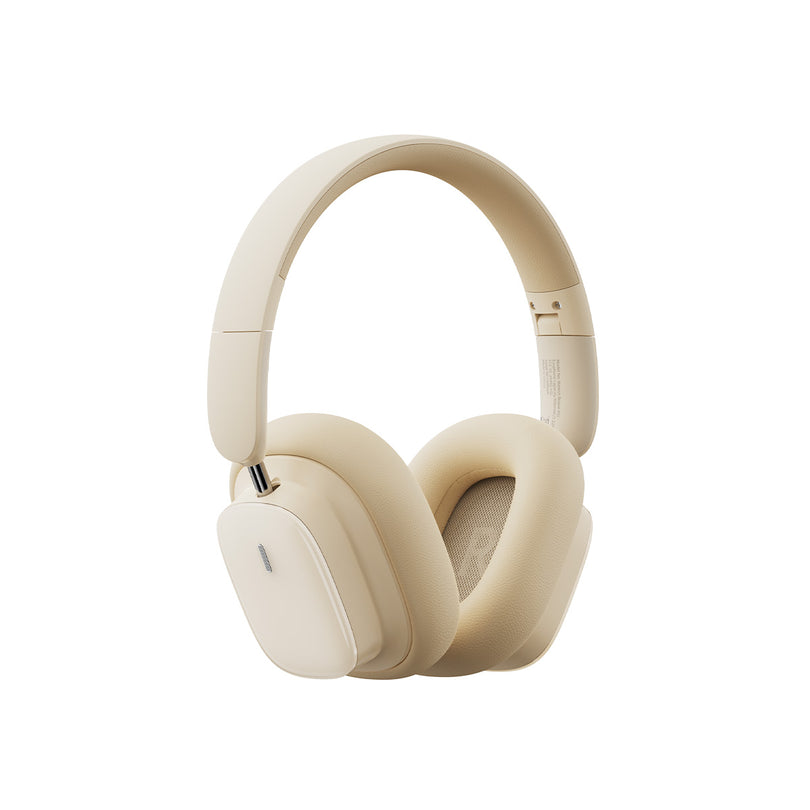
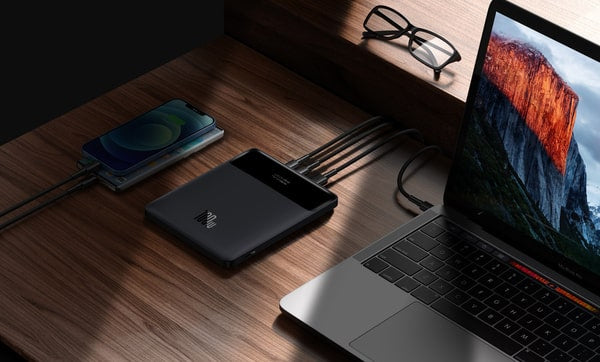

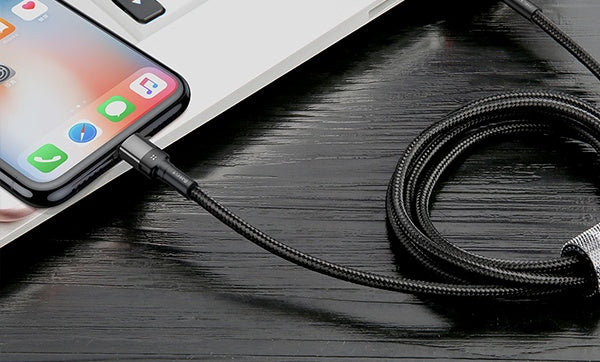
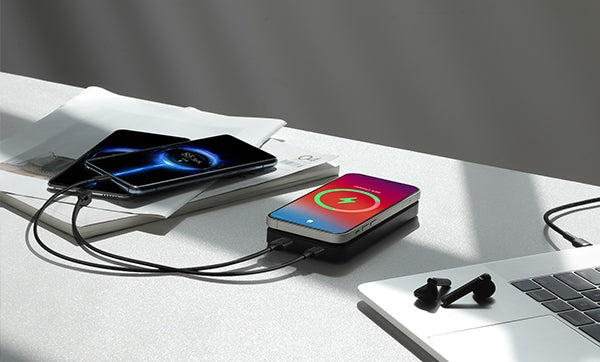
1 comment
Olivier Maniable
Je suis possesseur du modèle BLADE HD, et j’en suis ravi.
Très bonne autonomie, se glisse très bien dans ma sacoche, et je peux enfin recharger un Mac book air en USB C.
La BLADE adapte automatiquement sa tension et sa puissance à l’appareil connecté. GENIAL.
L’afficheur indique toutes les données de charge, et cerise sur le gâteau c’est le temps qui reste, ça c’est TOP.
Pour moi, c’est la meilleur Powerbank que je connais, et j’en ai utilisé un bon nombre, mais celle-là, c’est la meilleure.
Bravo Baseus
Je suis possesseur du modèle BLADE HD, et j’en suis ravi.
Très bonne autonomie, se glisse très bien dans ma sacoche, et je peux enfin recharger un Mac book air en USB C.
La BLADE adapte automatiquement sa tension et sa puissance à l’appareil connecté. GENIAL.
L’afficheur indique toutes les données de charge, et cerise sur le gâteau c’est le temps qui reste, ça c’est TOP.
Pour moi, c’est la meilleur Powerbank que je connais, et j’en ai utilisé un bon nombre, mais celle-là, c’est la meilleure.
Bravo Baseus